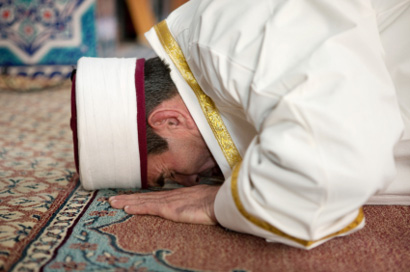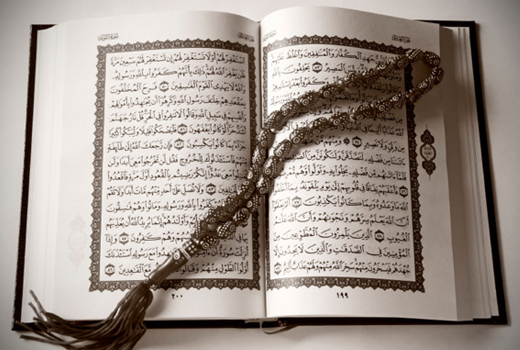The “Achilles’ Heel” of Islam: Terrorism, Violence & Interpretation of Qur’an
Religion is a powerful resource that has the ability to control massive numbers of people instantaneously. It can make believers strive to be the best possible person, or it can make humans do terrible things. It has the ability to shape the minds and the thoughts of young and old – all at the same time – while teaching both love and hate. Religion has existed for many years, centuries and millennia, and will continue to exist throughout the life span of humanity.
While there are many different religions throughout the world, each has contrasting fundamentals and principles that make it unique in the eyes of the believers. However, a closer study of a variety of religions reveals many similarities among them. Human nature, unfortunately, does not pay as much attention to similarities as it does differences, leading to significant amounts of religious discord. However, this not only exists in religion, it also takes place in the everyday course of our lives. When we look at the differences in issues, situations, events and incidents, and particularly in politics around the world, we tend to get feelings of animosity. Religion serves as a model for people to follow while religious leaders – who are inclined to perpetuate themselves in power – tend to create a patron-client relationship with the believers. While religion and belief systems are meant to be a positive foundation for people, patron-client relationships are a negative development and use interpretation of holy texts as a tool to further complicate relationships.
Islam is a fairly young religion in comparison to Buddhism, Judaism or even Christianity. However, today, Islam is the second largest religion on earth, and it is believed to be the fastest growing religion in the world. With more than 1.2 billion followers around the globe, Islam is a dynamic religious driver for many people living under a variety of lifestyles and political environments in all four corners of the world. In addition to states where the majority population is Muslim, many Muslim people are living either as a minority or as an influential segment with non-Muslim populations in other countries. In the United States, this number may reach up to 10 million, which is more than the populations of many small Middle Eastern Muslim countries. Since September 11, 2001, Islam has become part of American politics in addition to being a major security concern in its domestic and foreign policy. In recent times “Islam,” as one of the world’s leading religions, has been associated with conflicting interpretation that has had devastating impacts on the international community in general and on international security in particular.
The term “Islam” is derived from the Arabic word “Salam,” which is interpreted as meaning “peace.” However, it could also be interpreted as “submission,” and Islamic leaders today tend to prefer the later. A Muslim (follower of Islam) is supposed to “submit” to the will of God. However, this submission is not direct and has been historically controlled and guided by the clergy. Within the Islamic creed, radical movements, which have been growing as a result of the growth of Islam, work along this narrow line of peace and submission. Where the clergy is integrated into the body of political authority, or is part of the political vehicle, there is relative peace and tranquility. Where the clerical authority is separated, disconnected or deprived from the political authority, there is discord, conflict and confrontation, or even violence and terrorism.

© iStockphoto.com/brytta
The clerics in such states tend to manipulate Muslims through a network of interpretation defining the terrestrial life as a path towards “an interior life.” It is, therefore, believed that man’s life is a “terrestrial journey” to the life after life, or the “interior life.” Once this principle is accepted by the believer, then he, and in rare occasions she, can be easily manipulated and prepared to sacrifice his/her terrestrial life “in the path of God” in order to be rewarded in the afterlife . . . and the entire story of terrorism starts from here. The process of preparing for the life after life is very personal for many Muslims who are independent and believe their relationship with God does not need to go through an interface. However, in some cases, this relationship is guided by clerics who have an interest in keeping the patron-client relationship alive. Unfortunately, many Islamic communities facilitate this kind of relationship.
Wherever this pattern is used domestically, the conflict will remain within the territorial boundaries of the same state. A good example would be the Islamic clerics of Iran under the rule of Mohammad Reza Shah (1941-1979). Under the Shah, conflict and rivalry among the clerics existed. Many were paid by the government; some criticized the government; some were silent. But when the clerics took over the political authority and dominated the domestic arena, they started crossing into territorial boundaries and expanded their power under the banner of an Islamic world order. Exporting the revolution was, in fact, exporting their ‘interpretation” of Islamic rule and intervening in other states. Another example would be Saudi Arabia’s policy of expansion and support of Wahhabi interpretation of Islam in the Middle East. This is, in fact, nothing but Saudi state ideology and interpretation of Islam the Saudi way. They managed to export it to Afghanistan and Pakistan, thus destabilizing the region. The process gave birth to Al-Qaeda, which further destabilized the region and the world.
Intervention in other states has also occurred in the form of non-state players acting against states. The Afghani Mujahedeen of the 1980s, who fought against the Soviets, is an example, which is always fresh to look at in-depth because dozens of Muslim Afghan groups were each driven by a different interpretation of Islam. All were against the Soviet occupation of Afghanistan, but, when they had a chance, they would also fight against each other. None of those groups were considered the state of Afghanistan, but they acted like states. Years later, al-Qaeda acted the same way, although against U.S. and world security. Interestingly, all such groups have their own personal approach and interpretation of Islamic documents. And, the reason they fight against each other is in part because they reject other interpretations.
The text of Qur’an is highly sophisticated for many ordinary Muslims, even if they can read it. Understanding Qur’an, however, requires more than linguistic skills and knowledge, and that is where interpretation by the clerics becomes a necessity. Most clerics with such power often claim the monopoly on the holy book interpretation.

© iStockphoto.com/craftvision
Though it is not openly discussed between Islamic scholars, the Islamic world does not have a central authority for such interpretations. This makes it vulnerable and open to unauthorized, and often illegitimate, interpretations coming from whoever feels he has a responsibility to take the lead. Take the definition of “jihad” in Islam – a key word so many times used and abused by many sources. While all jihadists define themselves as Muslims and believe theirs is the correct interpretation of Islam, not all Muslims define themselves as jihadists. “Jihad,” which is typically defined as Islamic holy war by the extremists, is also defined or interpreted as “to exert your best effort” by non-extremists. This definition of jihad allows the word to enter into work, school, a relationship and daily life, in general, without threatening anyone.
The text of Qur’an and Islamic tradition considers jihad as an internal, individual and spiritual struggle toward self-improvement – a real moral cleansing and intellectual effort. Yet the extremist perspective introduces jihad as “struggle” directed toward the external world. Such struggle can be violent. In fact, it can be an effort or series of violent efforts – a war or fight – that contends with an adversary in physical combat or even a resistance under other circumstances. The extremist interpretation of jihad has transformed it into a destructive offensive war of annihilation and a strategy for fighting against the rest of the world. Along the same line, and following this extremist interpretation, religious authorities within certain Islamic communities have upgraded the tradition of “jihad” into one of the fundamental columns of Islam. And, they have been preaching that participation in “jihad” against others is a requirement for all Muslims.
It is worth mentioning that within the Islamic tradition, shari’a law has four sources. Qur’an is the primary source basically because it is the word of God revealed to Prophet Muhammad. The second source is a collection of accounts of the life of the Prophet and his Companions, known as the hadith (narratives of traditional Islam claimed to have been transferred through disciples of Muhammad or people very close to him). These sources are agreed upon by moderate and hardliner Muslims alike. However, the moderate may not be practicing them in detail or may differ in the way they interpret them. Analogy and consensus are the final two sources. Through these processes Muslim communities can deliver rulings for situations not covered in the first two sources.
However, the existence of a variety of interpretations has historically led to conflict within Islamic communities. Aggressive Islamists want to “strip away the innovations that they see as having corrupted the practice of Islam, starting with the material that analogy and consensus and some of the ahadith (plural of hadith) have added to the sharia, but also including extra-legal practices Muslim societies have adopted through emulating the West.”1 Obviously the entire belief is, to a great extent, based on interpretation. When it comes to interpretation, aggressive Islamists prefer strict adherence to the older interpretations of Qur’an and shari’a law, and disapprove of secular influences in governance.
Interpretation of Qur’an can be a dual sword. It could vitalize the religion of peace, or it can jeopardize its credibility as such. The Islamic world does not possess a central authority for such issues. And, in fact, this is a weakness because it leaves an open window for authorized-unauthorized interpretation. This is exactly where the Islamic world has to come up with some sort of idea and practical solution to reduce the existing destructive tension between and within Muslims on the one side and with the international community on the other. It is time for the Islamic world to think of going beyond “Middle Ages” and agree with disagreements. It is time to devise a method to reject extremists within the Islamic communities and substitute their voice with one of moderation as has been recommended by hadith – ![]() meaning moderation is the best. This can be done by Muslims, and has to start from the Muslim communities.
meaning moderation is the best. This can be done by Muslims, and has to start from the Muslim communities.
An interior life can only make sense if our terrestrial life is non-violent and respectful to others, and can avoid bloodshed in the name of interpretation of religious traditions.

© iStockphoto.com/ugurhan





























